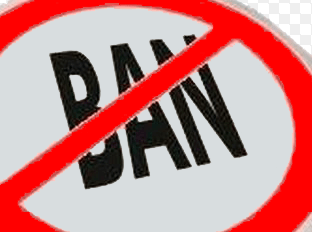
Valuation models available to governments and their agencies, managements of corporate bodies, and investors allow them to make meaningful and productive investment decisions.
This feature is a continuation of an earlier publication on the foregoing. Discussions in the previous write-up ended on some key features of bonds and their impact on investment valuation and decisions.
Yields in bond transactions
Determination of yields in bond transactions is “indexed” to prevailing market conditions. Unlike the premium rate which often remains unchanged to the bond’s maturity date, a yield may vary in relation to conditions existing in the market from time-to-time. Generally, activities in the bonds market could result in the derivation of three distinct yields. These include current yield, yield-to-maturity, and yield-to-call.
Current Yield: This is also called interest yield. It is determined by measuring the annual coupon payment as a fraction of the bond’s prevailing market price. For instance, in our earlier illustration using Fiesta Corporation, the annual coupon payment was determined as GH¢100.00; the value of the bond was given as GH¢1,000.00. Suppose Fiesta Corporation’s bond is currently trading at GH¢990.00. The current yield will be 10.10 per cent ((GH¢100 ÷ GH¢990) x 100% = 0.1010 x 100 per cent = 10.10 per cent). One observes an increase in yield (10.10 per cent) as the price or value of the bond falls from GH¢1,000.00 to GH¢990.00. Conversely, an increase in price of the bond will result in a decrease in the current yield. In our example, assume the prevailing market price of Fiesta Corporation’s bond is GH¢1,020.00. The current yield would be 9.80 per cent ((GH¢100 ÷ GH¢1,020) x 100 per cent = 0.0980 x 100 per cent = 9.80 per cent).
It is worth emphasising, the current yield is not the rate investors envisage as a return on their bond investment. Rather, it provides bond investors with ample information on the amount of cash income their bonds will generate in a given year. However, capital gains or losses to be realised should the bond be called or held to the maturity date are not factored into the computation of the current yield. As a result, it is argued the use of current yield as determinant of the total expected rate of return on bond investment is inaccurate.
Yield-to-Maturity (YTM): This refers to the rate of return a bondholder earns, should he or she decide to hold on to the bond to the maturity date. If the bond issuer does not call the bonds prior to the maturity date, and does not default in payment, the bondholder will earn the promised rate of return, which is the yield-to-maturity. Assume on 8th January, 2017, Fiesta Corporation issued GH¢ 1,000 of 10-year bonds with a year-end coupon payment of 10 per cent at a price of GH¢1,450.00. The maturity date for the bonds issued is 7th January, 2027. Should the bond investor hold on to the bond to the maturity date, he or she would earn 4.35 per cent as a return on the investment as depicted in the following equation.
Bt = GH¢1,450 = 100 100 100 … 100 1000
(1 r)¹ (1 r)² (1 r)³ (1 r)10 (1 r)10
To determine the yield-to-maturity in the above equation, we will have to substitute presumed values for “r” until we arrive at the value that will allow the GH¢1,450.00 on the left hand side to equal the figures to the right of the equation. Indeed, this may be mathematically laborious. However, with the aid of an Excel or a financial calculator, we could determine the yield-to-maturity with relative ease. The calculations revealed the above equation would “balance,” if we substituted 4.35 per cent for r.
Excel Function: The spreadsheet in Excel could be used to compute the yield-to-maturity. In Excel, the RATE function can be used to compute the yield-to-maturity after entering the following variables:
N = 10; PMT = 100; PV = -1450; FV = 1000; Type = 0.
The final input will look like: = RATE(10,100,-1450,1000,0). Click “ok.”
The result or output will be 4.35 per cent, which is the bond investment’s yield-to-maturity.
The RATE function was used instead of the YIELD function because the former works effectively, if the objective is to determine the YTM for a bond transaction with a current date that comes immediately after either a premium payment date or an issue date. In determining yields on bonds on dates other than the foregoing, one could employ the YIELD function in Excel (Brigham and Ehrhardt, 2008, p. 168). The present value (PV) amount entered into the calculator shows a negative value because it is an outflow from the bond issuer to the bondholder.
Financial Calculator: In the financial calculator, one would have to input (enter) the following variables to derive the YTM:
N = 10; PV = -1450; PMT = 100; FV = 1000; and press the key, I/YR.
Yield-to-Call (YTC): The tendency for a bondholder to hold on to his or her bonds to the maturity date may not be guaranteed if the bond agreement has a call option.
A bond with a callable option may be called by the bond issuer, if the present market premium rate is less than the rate on the date of signing the bond contract. At the call date, the expected rate of return will be computed and paid to bondholders. Here, the expected rate of return is known as the yield-to-call. In our earlier illustration, we noted Fiesta Corporation issued its 10-year bonds at 10%. Suppose the bonds issued had a callable option and the current market rate is 6%. Fiesta Corporation may be interested in calling the bonds issued earlier at 10% to save 4% (10% - 6% = 4%) each year on each bond. In monetary terms, Fiesta Corporation would save GH¢40 (GH¢100 – GH¢60 = GH¢40) per annum on each bond issued or sold. This callable option inures to the financial benefits of the bond issuer; bondholders may be compelled to surrender their bond investments to the bond issuer. Mathematically, YTC could be determined as:
Price of bond=?_(t=1)^N??It/(1 r)t (Call price)/(1 r)N?
Where:
N = Number of years until the issuer can call the bond
Call price = Amount the issuer must pay to the holder
Valuation models available to governments and their agencies, managements of corporate bodies, and investors allow them to make meaningful and productive investment decisions.
This feature is a continuation of an earlier publication on the foregoing. Discussions in the previous write-up ended on some key features of bonds and their impact on investment valuation and decisions.
Read Full Story














Facebook
Twitter
Pinterest
Instagram
Google+
YouTube
LinkedIn
RSS